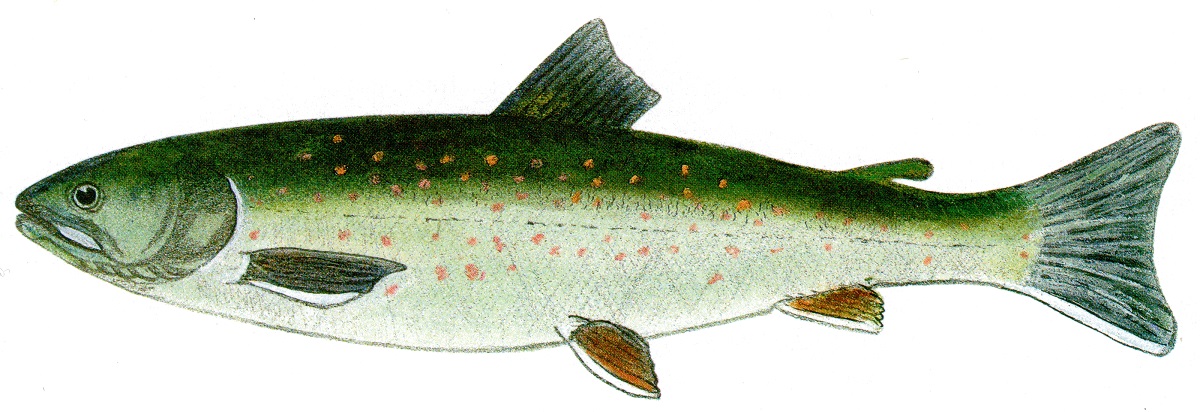
Name
- Common name: Arctic Char
- Scientific name: Salvelinus alpinus
- Order: Salmoniformes
- Sub-family: Salmoninae
Also known as
Arctic Charr
Viewing opportunities
- Arctic Char are found in much of the circumpolar north with the most northerly distribution of any freshwater fish.
- In the Yukon, Arctic Char occur in the North Slope drainages naturally, but are also in accessible pothole lakes that are stocked by the Government of Yukon.
Description
- Elongated body with small, scattered light pink or red spots along silvery sides.
- Largest spots are usually larger in diameter than the pupil of the eye.
- Spawning fish develop brighter spots and orange fins; males develop a kype, which is a hooked jaw.
- Small scales; white leading edges of the paired fins.
- Deeply forked tail with a narrow caudal peduncle.
Fast facts
- Length: 25 to 80 cm
- Weight: 0.5 to 4.5 kg
- Habitat: Freshwater and anadromous
Conservation status
- Yukon: S1 (Critically Imperiled wild/non-stocked populations)
- Global: G5 (Secure)
Behaviour
The anadromous form of Arctic Char migrates into the sea in the summer to feed, but returns to fresh water to pass the winter. The non-anadromous form remains in fresh water throughout its entire life. It spawns in fall and early winter on near-shore shoals of lakes and the gravel bottoms of streams and rivers. Arctic Char don't die after spawning like other types of salmon and will spawn several times throughout their lives.
Diet
Aquatic insects, molluscs, crustaceans, leeches, fish eggs and fish.
Char and people
- Arctic Char, as a food source, have been farmed in Canada since the early 1980s.